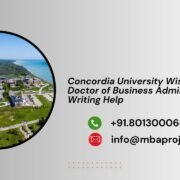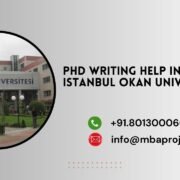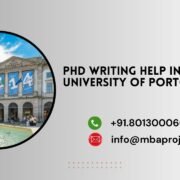SCOPUS journal writing help in TBS Education
SCOPUS journal writing help in TBS Education
SCOPUS journal writing help in TBS Education. Publishing in SCOPUS-indexed journals is a key milestone for researchers, scholars, and postgraduate students. For learners at TBS Education, ensuring that research papers meet the rigorous standards of SCOPUS journals requires structured guidance, advanced writing skills, and a deep understanding of academic publishing protocols. Our expert SCOPUS journal writing help provides end-to-end support to maximize publication success.
Why SCOPUS Publication Matters for TBS Education Scholars
SCOPUS is one of the world’s largest and most trusted abstract and citation databases, covering a wide spectrum of peer-reviewed literature. At TBS Education, publishing in SCOPUS journals not only enhances academic credibility but also contributes to global knowledge exchange.
Key benefits include:
-
Global Visibility: Research published in SCOPUS journals gains worldwide recognition.
-
Career Advancement: SCOPUS publications strengthen academic CVs and job applications.
-
Institutional Ranking: TBS Education’s reputation is reinforced through faculty and student publications.
-
Citation Opportunities: SCOPUS indexing ensures higher chances of being cited by other scholars.
Challenges Faced by TBS Education Researchers
Even the brightest researchers at TBS Education encounter obstacles in getting their work published in SCOPUS journals. Common challenges include:
-
Adhering to Journal Scope: Identifying the right journal that aligns with the research topic.
-
Manuscript Structuring: Drafting a paper that meets formatting, referencing, and editorial standards.
-
Language Barriers: Non-native English speakers often face challenges in academic writing.
-
Peer Review Rigour: Meeting reviewers’ high expectations in methodology and originality.
-
Rejection Risk: Manuscripts may be rejected due to lack of novelty, poor formatting, or plagiarism concerns.
Our SCOPUS journal writing assistance directly addresses these challenges, ensuring your paper meets every requirement.
Comprehensive SCOPUS Journal Writing Help for TBS Education
We offer a full spectrum of support for students, PhD scholars, and faculty members at TBS Education who aim to publish in SCOPUS journals.
1. Topic Selection and Research Gap Identification
Choosing a relevant and innovative research topic is the foundation of a successful SCOPUS paper. We help in:
-
Identifying research gaps in existing literature.
-
Aligning the topic with journal scope.
-
Ensuring originality and relevance to current academic trends.
2. Manuscript Structuring and Formatting
SCOPUS journals follow strict formatting guidelines. Our experts assist in:
-
Structuring the paper into Abstract, Introduction, Literature Review, Methodology, Results, Discussion, and Conclusion.
-
Ensuring adherence to APA, MLA, or other required referencing styles.
-
Crafting a concise yet impactful abstract.
3. Academic Writing and Language Polishing
Clear and precise writing is essential. We provide:
-
Professional academic writing services tailored to SCOPUS standards.
-
Language editing and proofreading for grammar, syntax, and clarity.
-
Enhancements for readability and scholarly tone.
4. Data Analysis and Interpretation
For empirical studies, data handling is crucial. Our support covers:
-
Statistical analysis using tools like SPSS, STATA, or R.
-
Qualitative analysis with NVivo or thematic approaches.
-
Presenting findings in a clear, compelling manner with charts, graphs, and tables.
5. Journal Selection and Submission Guidance
We guide TBS Education scholars in:
-
Selecting the most appropriate SCOPUS journal.
-
Preparing a cover letter to accompany submission.
-
Understanding journal submission portals and processes.
6. Reviewer Response and Revision Assistance
After peer review, revisions are inevitable. We assist by:
-
Drafting effective responses to reviewer comments.
-
Revising manuscripts as per feedback.
-
Enhancing the paper’s chances of acceptance after resubmission.
Benefits of Professional SCOPUS Journal Writing Help
For TBS Education researchers, professional guidance offers multiple advantages:
-
Higher Acceptance Rates: Expertly crafted manuscripts have greater chances of being published.
-
Time Efficiency: Save time by relying on specialists who understand journal requirements.
-
Error-Free Writing: Eliminate language and formatting errors that often lead to rejection.
-
Confidence in Submission: Scholars can submit manuscripts with assurance of quality.
Plagiarism-Free and Ethical Writing Assistance
Academic integrity is central to SCOPUS publication. We ensure:
-
Zero Plagiarism: All manuscripts are original and thoroughly checked with advanced plagiarism tools.
-
Ethical Compliance: Research papers adhere to ethical standards of data collection, analysis, and reporting.
-
Confidentiality: Scholar identities and manuscripts are kept secure at all times.
Customized Support for TBS Education Scholars
Every research journey is unique. That’s why our SCOPUS journal writing support is customized to meet specific needs:
-
Undergraduate projects seeking initial research exposure.
-
Postgraduate theses requiring conversion into SCOPUS-level papers.
-
Doctoral dissertations aiming for high-impact journal publications.
-
Faculty research seeking international academic recognition.
How TBS Education Scholars Can Get Started
Getting started with our SCOPUS journal writing help is simple:
-
Submit Your Manuscript or Proposal – Share your draft or research idea.
-
Receive Expert Evaluation – Our academic consultants review and provide detailed feedback.
-
Collaborative Writing and Editing – Work with our team to refine your paper.
-
Finalize and Submit – Submit your polished manuscript to the targeted SCOPUS journal.
Conclusion
Publishing in SCOPUS journals is a prestigious achievement for researchers and scholars at TBS Education. With professional guidance, meticulous writing, and structured support, the journey from research idea to published paper becomes more achievable. Our specialized SCOPUS journal writing help empowers TBS scholars to meet international standards, enhance academic profiles, and contribute meaningfully to global research.
Thank you for reading our Blog “SCOPUS journal writing help in TBS Education”.
Also, read our more BLOG here.
For Order “SCOPUS journal ” feel free to contact us at Mob: Call / WhatsApp: +91.8013000664 || Email: info@mbaprojects.net.in














